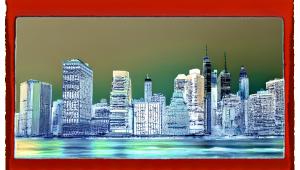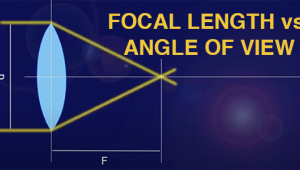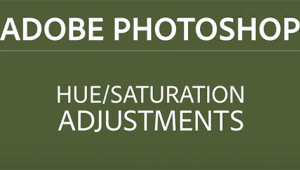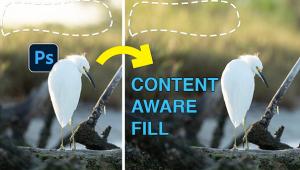J'ai lu cet article. Je pense que vous mettez beaucoup d'efforts pour créer cet article. Je vous remercie de votre travail.
replique montre
The Business Of Editorial Photography; Telling A Story With Images Page 2
Shawn G. Henry: Most of my marketing during the last few years has been via e-mail, though I still do some direct mail. I’ve done a few smaller campaigns, targeting select current and potential clients, using Blurb books (basically a direct mail portfolio) that had good results.
I’m a general member of ASMP (www.asmp.org) and have several portfolios in ASMP’s Find A Photographer (FAP) directory (www.findaphotographer.org). Referrals from FAP more than pay for my membership every year. I’m a member of Editorial Photographers (EP), www.editorialphoto.com, as well and have a portfolio in EP’s FAP, too. Being included in the EP directory is worth far more than the minimal cost of membership in EP. Disclaimer: I’m on the national board of ASMP and I chair the FAP committee.
I’m also a member of a small group of photographers represented on www.bigshotstock.com. It’s basically an online stock database for member photographers, but we’ve done a fair bit of marketing for the site, including a couple of Blurb book portfolio “source books.” Again, the referrals I’ve received from BigShot more than pay for my membership. I’ve also had pretty good results with Google.
Brian Smale: I have generally noticed an uptick in calls and jobs in the first week or so after sending out an e-mail. These have always come from existing clients, so it could be a coincidence. Nobody has ever said to me, “loved the e-mail, here’s a job,” but it does keep my name floating around somewhere in a client’s head. A website is the default method of finding photographers anywhere. I’m finding it increasingly difficult to get printed portfolios in front of photo editors and art directors. Everybody just wants to see a website. I think sales calls would probably have the greatest impact, if anyone would answer their phone! Facebook and LinkedIn seem to have some value, especially in reconnecting with past clients who have moved on and aren’t easily found other ways.
SB: What types or formats of photographic portfolios do you find work best for an editorial client?
Brian Smale: I think the web rules right now. A nice print book is probably good to have on hand, in case we all stop using the Internet tomorrow! Small printed books (like Blurb, etc.) will work since they look good and can be kept on file with the photo editor. It will be interesting when the Apple Tablet comes out. I expect that there will be a “portfolio” app for it within minutes. That could be very interesting.
Shawn G. Henry: Without a doubt, a website is the number one portfolio these days. It’s the surest way of getting your work in front of a potential client and sometimes it seems like the only way. Years ago, when I was first starting out, it was possible to pick up the phone and get an appointment to see the director of photography at National Geographic or the photo editor at The New York Times Sunday magazine. Doing that today is close to impossible, even at less prestigious magazines. Print books are still important. It’s hard to match the tangible quality of images on paper with a website but it’s just so much harder to get them seen; a website should be a photographer’s first priority.
 |
 |
|
|
||
SB: What are the top industry changes you have seen in the editorial photography market in the last five years?
Robbie McClaran: I suppose the number one change is the demise of so many magazines. Condé Nast closed another four titles recently which I believe makes something like 21 major consumer titles to close this year alone. As there are fewer magazines being published there seem to be more and more photographers who want to work for them.
Next on my list is the obvious influence of digital photography. In the last five years I have gone from shooting exclusively film and delivering prints to exclusively digital. It’s certainly more convenient in almost all respects but I fear we’ve lost something in the transition, a certain level of craft perhaps, in favor of speed and convenience.
I think another major change is actually something that has not changed—the editorial fees. Many magazines are paying the same rates (and in some cases lower rates) they were paying 10, 15, even 20 years ago. Fewer magazines adhere to the old practice of paying space against day rate, going for a flat fee instead. Contracts retain more and more rights to the publishers, including foreign language editions, reprints—all for the same low fee. Editorial photography remains a buyer’s market and photographers have proven to either be unable or unwilling to buck that trend.
There are certainly other trends worth noting and I hate to be a pessimist but none seem to favor photographers. Some people are excited about the opportunity of producing multimedia and video for web publishing but I’m hearing stories of clients unwilling to pay appropriate fees for the cost of production.
Brian Smale: There has been a huge increase in the use of stock photography in general and disturbingly the use of microstock (see ya at the food bank kids!). Also, magazines are more likely to use just one or two images to illustrate a story, rather than the multiple-image stories like back in the “good old days.”
Shawn G. Henry: Many publications are waiting to assign photography until the last minute now, when it’s certain that the story will actually make it into print. Previously, many publications would assign right away and the story might never make it into the magazine. This is probably a result of budget problems, but the transition to digital also plays a role. With digital, magazines can assign almost up to the print deadline and know they can still get an image in the magazine.
Brian Smith: Too many publications are giving away their content for free on the Internet. I think from a business perspective what ESPN The Magazine and Photo District News do makes more sense, offering some stories for free but charging the full subscription rate if you want the premium content. “Free” isn’t working, which is a major factor in why we see so many large consumer magazines folding or merging.
Also, many images are used small and poorly on most magazine and newspaper websites. The magazines that feature big, bold, lavish reproduction that isn’t easily replicated on their dot-com sites haven’t taken as big of a hit in terms of print circulation. Maybe that means editors should run photos really, really big if they want to survive.
- Log in or register to post comments

















































